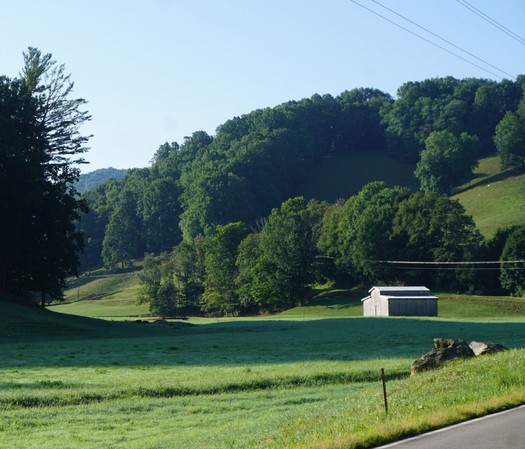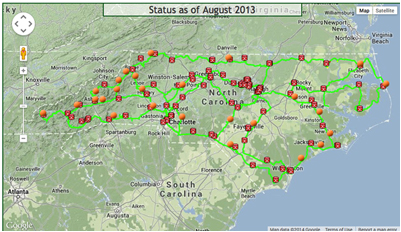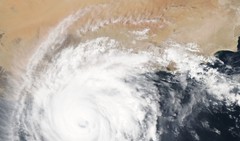Case Study: Golden LEAF Rural Broadband Initiative

Golden LEAF Rural Broadband Initiative
From alligators, bears and superstorms, to mountains, trains and incredible engineering challenges, the $144 million Golden LEAF Rural Broadband Initiative (GLRBI) remains an historic achievement for North Carolina.


BUSINESS DESCRIPTION
Learn more about the GLRBI
In 2007, the North Carolina Research and Education Network (NCREN) provided ultra-high-speed, low latency broadband services to 72 school districts, universities and research organizations in the state. Specifically, of the state’s 115 K-12 public school districts, less than 10 were connected to NCREN. In February 2010, this broadband infrastructure, owned and operated by the private non-profit MCNC, consisted of about 200 miles of dark fiber with a compilation of limited amounts of small bandwidth leases throughout North Carolina. At this time, MCNC embarked on a massive statewide expansion of the network aimed to deliver affordable high-speed broadband to more than 1,500 community anchor institutions; and through private-sector service providers, potentially reach 180,000 businesses and more than 300,000 underserved families in 82 mainly rural counties in North Carolina. MCNC announced the completion of this ambitious project in August 2013.
"In order to have a great state, we have to have both great infrastructure and common sense operations ... and this announcement and this cooperation with a great agency and a great company is great news for North Carolina. This is 2,600 miles of broadband highway touching 82 of our 100 counties. That's tremendous success in such a short period of time."
Pat McCrory
North Carolina Governor
BACKGROUND
The American Recovery and Reinvestment Act (ARRA) of 2009 appropriated $7.2 billion to broadband investments nationwide. The ARRA directed the U.S. Department of Agriculture’s Rural Utilities Service (RUS) and the U.S. Department of Commerce’s National Telecommunications and Information Administration (NTIA) to expand broadband access to unserved and underserved communities, increase jobs, spur investments in technology and infrastructure, and provide long-term economic benefits. The RUS was able to further fund the Broadband Initiatives Program while the NTIA created a competitive grant program called the Broadband Technology Opportunities Program (BTOP). The GLRBI was funded through two BTOP grants totaling $104 million. More than $50 billion in requests were received by the NTIA, and MCNC’s applications were chosen against great competition.
In addition to the federal grants, MCNC also raised significant matching funds from private donations and investments including $24 million from the Golden LEAF Foundation and $10 million from the MCNC Endowment. No state funds were utilized as matching funds for the MCNC awards. Due to added investments from MCNC, more than 100 percent of the project grant value was expended with private-sector companies for engineering, outside plant equipment, optical gear and construction – all were based in North Carolina or had a presence in the state.
CHALLENGE
The North Carolina Rural Prosperity Task Force published findings in the late 1990s that stated the availability of broadband infrastructure would be a key component of economic vitality for North Carolina in the years to come, particularly in rural areas of the state. According to the 2010 census (the most recent data available), 30 percent of North Carolina’s population lives in rural counties, and these areas sorely lack fiber infrastructure. Sixty-seven of the counties impacted by the GLRBI at the start were either completely or partially underserved, meaning they lacked the minimal amount of broadband infrastructure based on the federal government’s definition of underserved.
"The Golden LEAF Rural Broadband Initiative provides more proof that the investments made under NTIA’s Broadband Technology Opportunities Program are bringing greatly needed broadband to community anchor institutions in North Carolina and across the country. MCNC has utilized nearly $104 million in broadband grants to provide every school in the state with an available broadband connection of at least 100 Mbps. MCNC has also procured Internet access for all North Carolina schools at a savings of 60 percent over retail rates. I congratulate MCNC and its partners for providing a great demonstration of the benefits of broadband."
Lawrence E. Strickling
U.S. Department of Commerce Assistant Secretary for Communications and Information NTIA Administrator
The high-end needs and requirements of NCREN connectors and the fast-growing broadband demand of the three million students, non-profit hospitals and others who use NCREN on a daily basis is what prompted MCNC to undertake this massive project. NCREN users range from genomics researchers at UNC Chapel Hill, to network engineers at NC State University, to supporting the bandwidth needs of facilities in rural North Carolina where climate data is gathered and analyzed, to the third grade teacher in northeast North Carolina who takes her class on a virtual field trip to the N.C. Museum of Natural Sciences in Raleigh. As MCNC looked ahead to the near future, the demand for bandwidth from these users would outstrip the capacity of NCREN by 2013.
SOLUTION
The GLRBI provides a speed-of-light path to the future for communities across the state. The first phase of the project was completed in April 2012 with 957 total operated miles (442 of which were new construction). The second phase completed in August was much larger with total operated miles at 1,696 (1,300 of which were new construction). Through this $144 million investment, the GLRBI has secured the capabilities of NCREN for the years ahead as well as created substantial fiber assets in the state that can be leased at very attractive rates to private-sector entities. Now, this highway to the future also can be a highway for prosperity for enterprises and service providers in North Carolina who are looking to grow their network, own and operate a network, or create more route diversity. Also, based on oversight of the project’s build-out, MCNC engineers have the vast experience necessary to aid others who may need general contracting assistance with other fiber projects in the state.
The middle-mile network composition for Phase 1 has backbone routes constructed with a dual conduit system populated with 96 strands of single-mode fiber. Phase 2 of the project uses a single conduit comprised of three innerduct with placement of 144 single-mode fibers. All lateral routes have a minimum of 12 strands of single-mode fiber installed in a single 1.25-inch conduit. Handholes/interconnection points are available approximately every 5,000 feet or less as needed. This allows for opportune access to fiber strands along the routes by private service providers and other companies. Co-location facilities also are available for lease along the entire fiber route. These are free-standing huts with 24x7 secure access.
MCNC has invested nearly $35 million over the last 10 years in the upkeep of NCREN, keeping the network leading edge. MCNC’s neutral delivery model gives North Carolina a real competitive advantage and is driving the new broadband economy in the state. MCNC will not compete with private telephone and cable companies that provide services to the private sector. MCNC has built NCREN to serve the unique, high-bandwidth needs of research, education, public health, and other public institutions. Instead of providing services to commercial businesses and consumers, MCNC has chosen to share dark fiber with private service providers in an open access manner to bring the advantages of enhanced, high-speed broadband to both consumers and businesses throughout North Carolina.
"We are very proud of this work, and we already have so many great examples of success from this project. But, this is a marathon, and we are only in the first mile. MCNC will continue to partner and follow its public benefit mission to help grow the broadband business in North Carolina and to enable our citizens to have access where they learn, where they work, where they receive health care, and where they live. We have constructed the infrastructure to help do just that throughout North Carolina."
Joe Freddoso
President and CEO
MCNC
BENEFITS
This historic project already is having a positive impact on student learning, patient outcomes in health care, and is accelerating innovation and research all across North Carolina. As of January 2014, NCREN served more than 500 connectors including all K-20 public education in North Carolina; many private education institutions and charter schools; most of the state’s leading research institutions; other government, judicial and public safety customers; and more than 120 health care providers – including non-profit hospitals and public health clinics. BTOP funding and the GLRBI makes sure those community institutions receive the bandwidth they need at a stable price for the foreseeable future. This is accomplished through MCNC delivering critical middle-mile broadband infrastructure and direct connections throughout the state. The network build-out also stimulated many other enhancements. For example, the MCNC Video Services infrastructure received significant upgrades during the project to better meet increased demand. East Carolina University received a 10G network upgrade and now serves as a hub for most of eastern North Carolina. The National Climatic Data Center in Asheville now has two 10G connections. Vidant Medical Center became the first not-for-profit hospital connected to the N.C. Telehealth Network via NCREN. And finally, the spending on engineering and construction attributed to the project created and/or saved hundreds of jobs throughout the state.
NCREN is now a fiber-based network that includes more than 2,600 linear miles spanning the entire state and is one of just a handful of states with an open access, middle-mile fiber network available to economic developers, businesses and broadband service providers. MCNC’s role in the GLRBI also involves leading discussions with economic developers and private service providers to use the new fiber to improve broadband access and grow jobs in North Carolina. The state is increasingly reliant on technology and leading-edge broadband infrastructure, and just about every business and public sector entity in the state benefits from this important investment. These critical upgrades and the expansion of NCREN will help ensure that North Carolina has the digital infrastructure required to scale to future needs.

By the Numbers
- $75.75 million in federal BTOP funding
- $28.25 million in matching funding ($24 million from Golden LEAF Foundation and $10 million from MCNC Endowment)
Vendors & Contractors
Round 1
Fiber Technologies, Globe Communications, Comtech, Cisco Systems, CommScope, and ONUG Communications
Round 2
BroadPlex, Cisco Systems, CommScope, Comtech, ECC Technologies, Edwards Telecommunications, Fiber Technologies, Globe Communications, Kimley-Horn & Associates, and World Fiber Technologies
*All companies were either N.C.-based or have strong North Carolina presence.
Overall Impact
- 32,597 square miles
- 5.9 million residents / 2.32 million households
- 709,500 households without broadband access
- 160,000 businesses
- 1,718 K-12 schools
- 61 community college main and satellite campuses
- 33 baccalaureate degree granting four-year colleges and universities
- 254 public libraries
- More than 100 non-profit hospitals and public health clinics
- 1,887 public safety facilities








